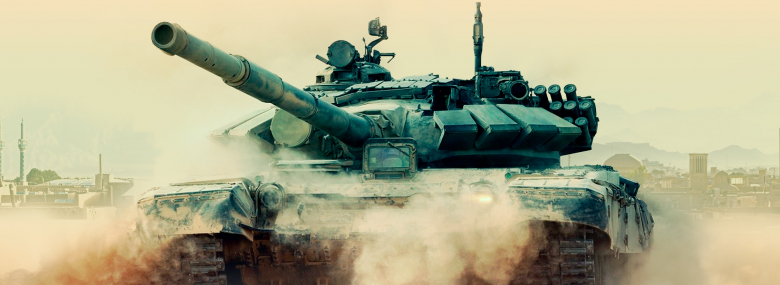
In our previous article, we’ve discussed the past of Char Leclerc in the form of an upcoming Tier 7 progression vehicle, the Leclerc Prototype and, today, it’s finally the right time to take a look at the real deal you’ve all been waiting for – the Tier 9 Leclerc MBT and its present.
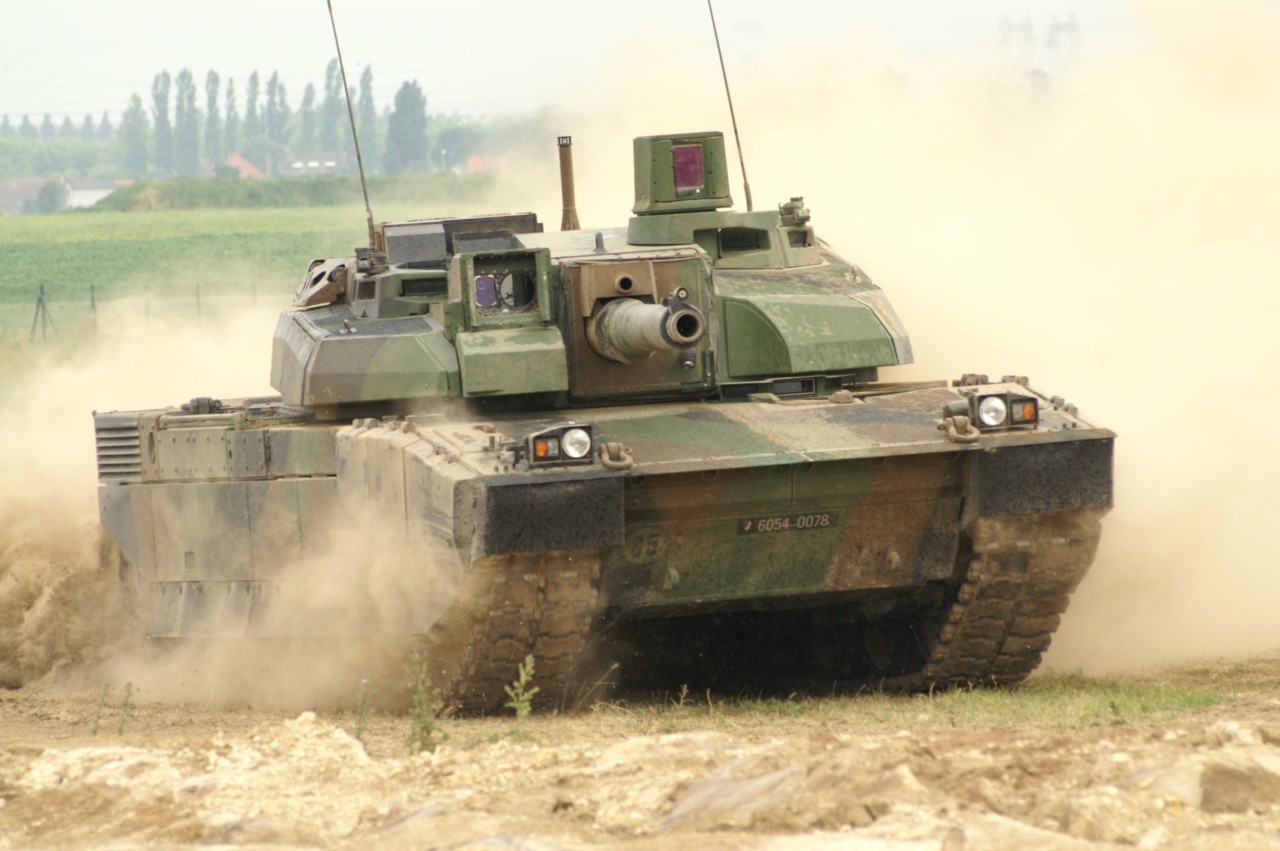
Char Leclerc
The story of the Leclerc prototype stage ended when France decided to adopt the tank in very large numbers and gave it its name. The idea was to build at least 1400 of them in order to make the French army more than capable to fight off any potential Soviet incursion.
But, of course, we all know how that story ended. The Soviet Union collapsed, which led in the early 1990s to a series of massive military budget cuts pretty much everywhere in NATO, including France. The initial production of the Leclerc tank started between 1991 and 1992, but the first four essentially pre-production vehicles (referred to as Tranche 1) were never issued to any operational units and were used for testing and publicity stunts only. Numerous displays were organized for journalists and general public both, but the truth was that, behind the scenes, dark clouds were gathering around the Leclerc program.
In 1991, the French army began a lengthy and arduous process of reorganization, which was mostly another term for a major reduction in numbers. This in turn meant that not that many Leclerc tanks would be needed for the restructured French armored units. The original request for 1400 tanks was reduced several times, which started a rather nasty cycle.
You see, designing and testing a new tank is expensive – very, very expensive. These massive costs have to be included in the final price of each produced vehicle. Naturally, if you produce fewer tanks, the unit cost goes way up. And when you have an extremely high price per unit, the public starts asking some uncomfortable questions. The politicians then pick up on that and start looking into reducing the costs of the program even further, usually by the means of reducing the procurement even further – and so on and so forth. Long story short, the original number was reduced several times until it reached the number four hundred (to be delivered by 2002), three times less than was originally intended, leaving the tank with one of the highest price tags per unit on the market.
That is not to say that the price was unwarranted. The Leclerc was – and is – an excellent tank. With its 56-57 tons (depending on configuration) it is quite light for the levels of protection it offers – the turret especially is quite resistant and the values only grew during the tank’s production. The protection is enhanced by the inclusion of GALIX smoke grenade launchers.
It is also highly mobile, powered by a 1500hp Wärtsilä V8X SACM 16.47 liter supercharged diesel engine, allowing it to go as fast as 72 km/h with the acceleration from 0 to 32 km/h taking 5 to 6 seconds. The transmission is 4-speed automatic one called SESM ESM 500. Interestingly enough, even with just one reverse gear, the maximum reverse speed is 32 km/h.
The tank is armed with a French GIAT CN 120-26 120mm smoothbore cannon that is loaded automatically from a Creusot-Loire band-type autoloader from a bustle-mounted ammo compartment. Its maximum rate of fire is 12 rounds per minute. The vehicle carries 40 rounds of ammunition, 22 of which are ready in the autoloader rack (the other 18 are located in a drum in the front of the vehicle, next to the driver). The inclusion of the autoloader allows for a crew of only 3 men, 2 of who sit in the turret. The turret is electrically operated and can traverse with the rate of 40 degrees per second. The gun itself can elevate to +15 degrees, depress to -8 degrees and is, of course, fully stabilized with a MRS and a thermal shroud.
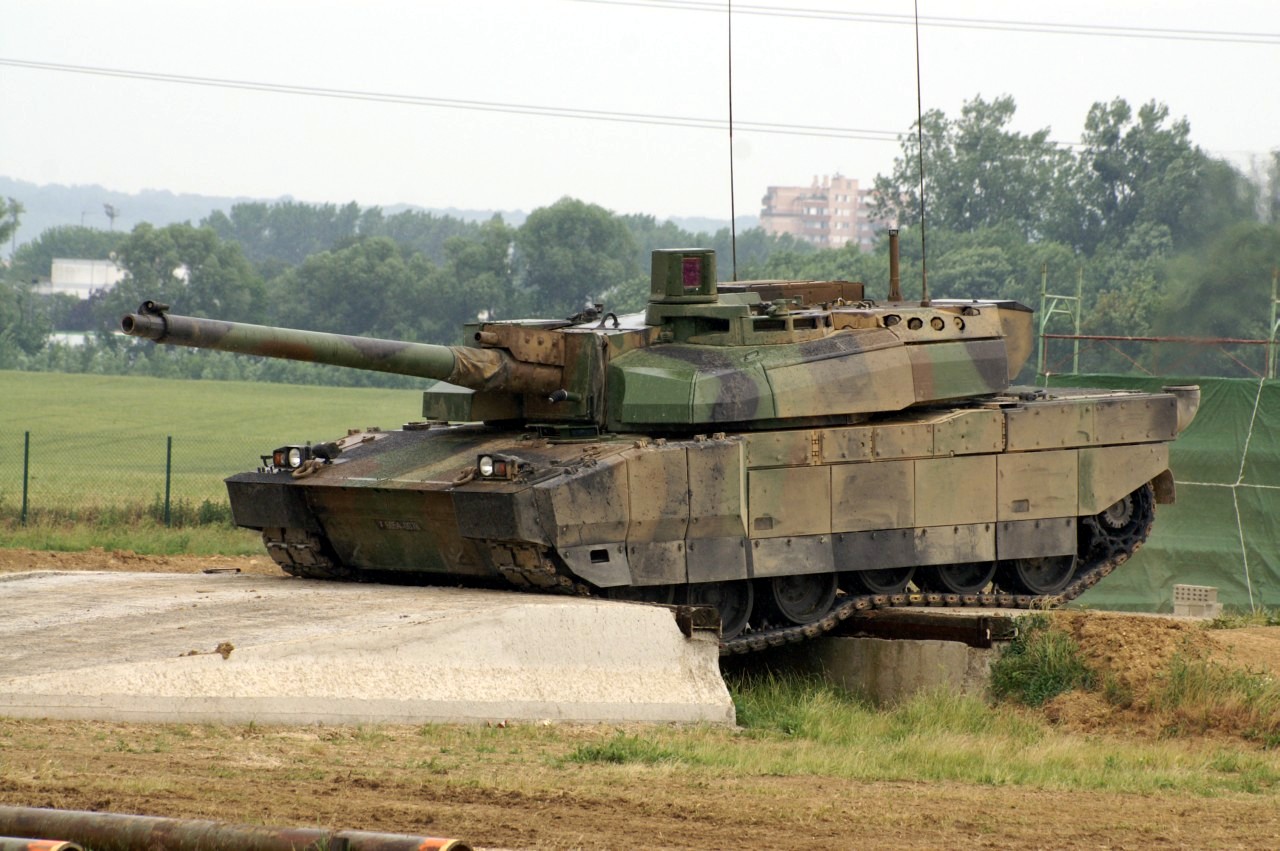
Char Leclerc
The Leclerc can use many types of ammunition, including the following:
- OFL 120 F2 APFSDS (kinetic round with the muzzle velocity of 1780 m/s, 640mm of penetration, depleted uranium core)
- OECC 120 F1A HEAT-MP (general purpose HEAT round with the muzzle velocity of 1100 m/s, approximately 450mm of penetration)
- OE 120 F1 HE round
Other interesting ammunition types were also developed, including:
- Procipac APFSDS-T experimental depleted uranium round with improved penetration, capable of taking out any armored target on the battlefield, including the heaviest tanks
- Polynege MPM long-range EFP guided round that can be fired indirectly at ranges between 2 and 8 kilometers. It climbs to 600m at about 3 km and then it starts to descend and lands on the top of the target (while being guided by GPS/IR/semiactive laser)
These rounds were, however, developed fairly recently and were not available for the initial version of the Leclerc – but we’ll get to that. The FCS includes:
- HL-60 gunner sights (with a thermal imager)
- HL-58 laser rangefinder
The commander has HL-70 panoramic sights at his disposal and a battlefield management system.
Overall, the Leclerc started as a cutting edge piece of technology with some of the most advanced electronics available. That’s how it went to production.
The production can be generally split into three series and each series is split into multiple batches (commonly called Tranches). The four pre-production vehicles are generally referred to as Tranche 1 with the real production starting with Series 1, Tranche 2. It’s worth noting that the Series are sometimes also referred to (in English) as Blocks and roman numerals, so Block I Leclerc refers to the same thing as a Series 1 one.
The Series 1 Leclercs were produced between 1992 and 1996 (the French army officially accepted the first production tank on January 14, 1992) with 132 built for France. This series consisted of 5 Tranches (Tranche 1 being the pre-production vehicles and Tranche 2 being another 17 mostly trial vehicles), which included several enhancements to the armor layout, turret and other components.
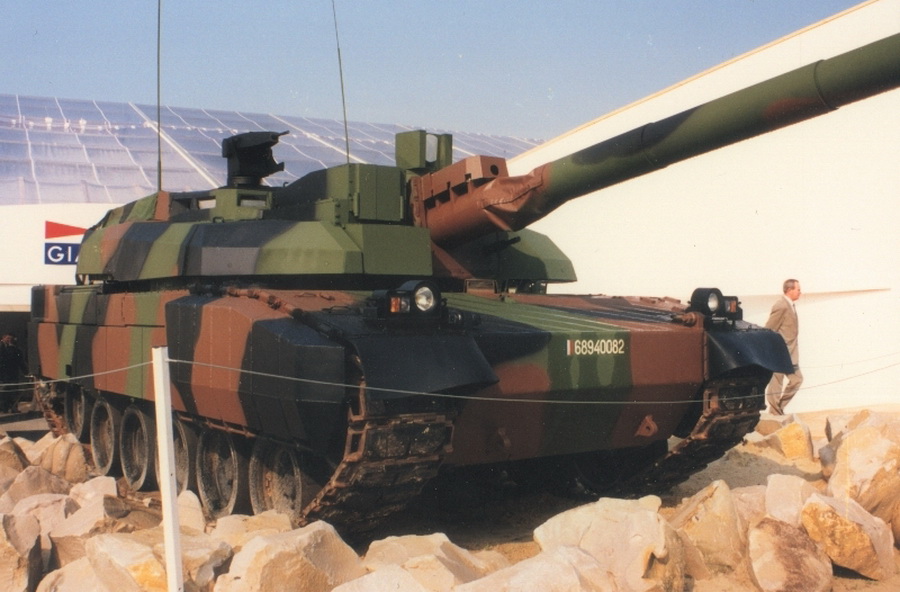
Leclerc "Bayard", Series 1, Tranche 1
The Series 2 Leclercs were produced between 1997 and 2003 and included several major changes and improvements with the goal of improving the lethality of this now decade-old tank as well as its ability to operate abroad, especially in harsh, hot climates. It consisted of 3 Tranches of 178 vehicles in total. The improvements included:
- Turret air conditioning and improved final drive cooling in order to make them operable in extreme heat (these were successfully tested in Qatar in a 54 degrees Celsius desert)
- General turret shape changes due to the installation of additional transport containers
- Improved digital data sharing systems and electronics
- Improved side armor plates
- The old gunner’s Athos thermal imager was replaced by a new second-generation Iris one in 2009
- This series was also retrofitted with the ICONE battlefield management system
You can now see that at the end of this series, a decade after the launch of the initial production, France only had like three hundred tanks – that’s approximately 30 tanks delivered per year, which isn’t much (in comparison, the JSMC plant in Lima, Ohio, currently plans to overhaul 34 Abrams tanks per month to zero hour condition). So what happened here?
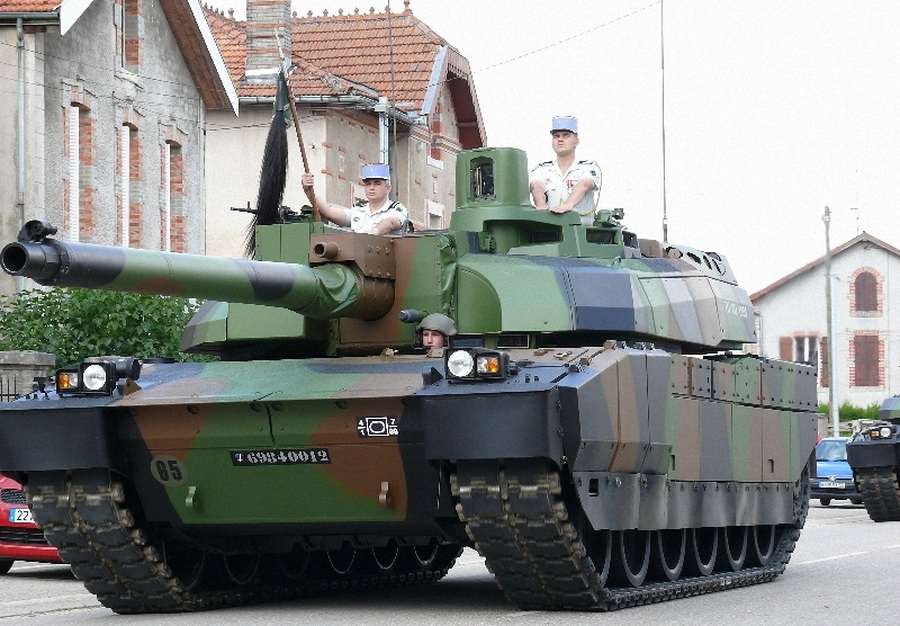
Char Leclerc, Series 2, Tranche 6
Three things essentially – first, there was the budget cuts and ensuing delays that happened after the execution of the military reduction plans we mentioned before. Things got discussed; plans changed... the usual politics business. It wasn’t a good decade for any western military (or any other one for the matter).
The second thing that happened was a major contract for the United Arab Emirates that ordered over four hundred Leclercs of different variants (including training vehicles and ARVs) to be delivered over the course of seven years. A portion of GIAT resources was redirected to complete the massive contract as soon as possible – it was extremely politically important for France to keep its UAE ties intact and their customers happy. We’ll get to that deal a bit later.
But sometimes, there’s another thing to be considered – as strange as that might sound, the slow (or at least slower than it could be) delivery speed of armored vehicles is sometimes intended. Like we mentioned before, putting your own armored vehicles into production is extremely expensive – almost ludicrously so and these expenses are only getting higher (this cost spiral is actually a well-known problem in the military aviation industry but naturally affects other branches as well). Gone are the days when anyone could build a tank in a shed with only a bunch of riveters for help.
But, there are things even more expensive than producing a tank – for example, stopping a production and then restarting it later. Such a process takes a lot of time because many of the skilled workers required for it would have left in the meanwhile.
In such cases, we are getting into a territory of truly absurd costs to the point where it is more viable to actually produce vehicles slower than possible just to keep the company running and the people occupied. Even this way the upkeep costs are absolutely staggering (like many would-be domestic tank producers found out the hard way) and with so few being able to afford such development and production, the current trends include the use of universal tried and true components. But let us return to the story of the Leclerc.
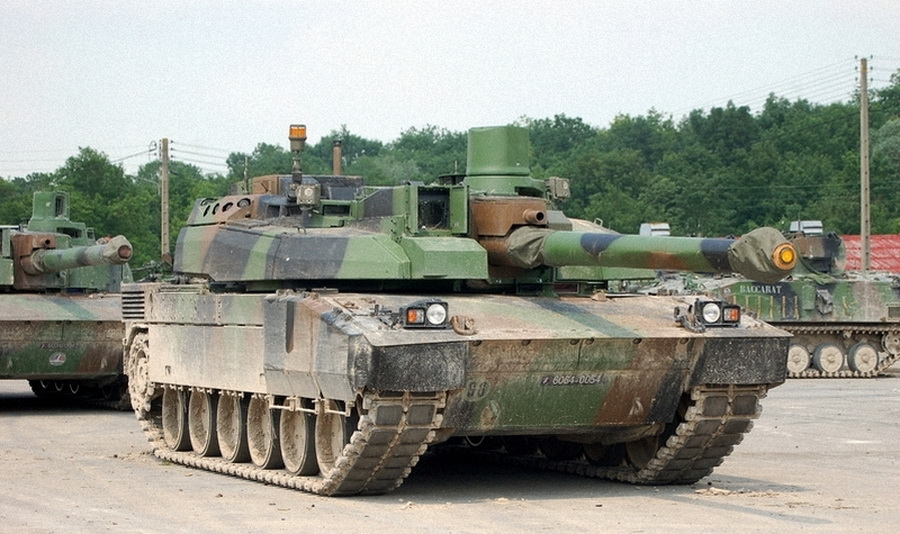
Char Leclerc, Series 3, Tranche 11
The final Series 3 is sometimes referred to as Series XXI (as in, a Leclerc for the 21st century) or Block II+ and consisted of 96 tanks from two Tranches produced between 2003 and 2007, bringing the total amount of the Leclercs produced for France to 406. This series included some truly major combat value improvements, including:
- New set of composite armor that includes titanium and ERA inlays, making it extremely durable and protecting the vehicle even against tandem warheads
- HL-120 panoramic commander sights with an Iris thermal imager
- Improved power output from the tank’s electric generator to power all the additional systems
- IFF indicator system by Thales
- ICONE battlefield management system
And that was it for the production French Leclercs. It ended in 2007 with the production line being shut down in 2008. GIAT claims the production can be restarted at any time, but given the costs of such an endeavor (as described above), it’s unlikely that more new Leclercs will ever be produced. Secondary GIAT facilities are, however, currently overhauling the older Series 1 and Series 2 Leclercs to Series 3 standard with the rate of approximately 10 vehicles per year.
Currently, of the four hundred Leclercs delivered, approximately 200 are still in active service, the rest has likely been mothballed due to various budget cuts. As for its use, the Leclerc has seen some in the French service during several peacekeeping missions (including Kosovo and Lebanon) – without serious incident
Let us, however, return to the UAE deal for a while because it produced an interesting variant that is partially included in the Armored Warfare version of the Leclerc – the Tropicalized Leclerc (or Leclerc Tropicalisé). This was the version produced for the UAE between 1994 and 2000 with 388 combat tanks delivered (as well as four dozen other versions). The biggest difference between this tank and the French Leclerc is the engine – the sheiks opted for a more universal power plant, the German MTU 883 1.500hp V12 diesel coupled with Renk HSWL 295TM automatic transmission. The decision was likely influenced by the fact that MTU has close ties to the UAE.
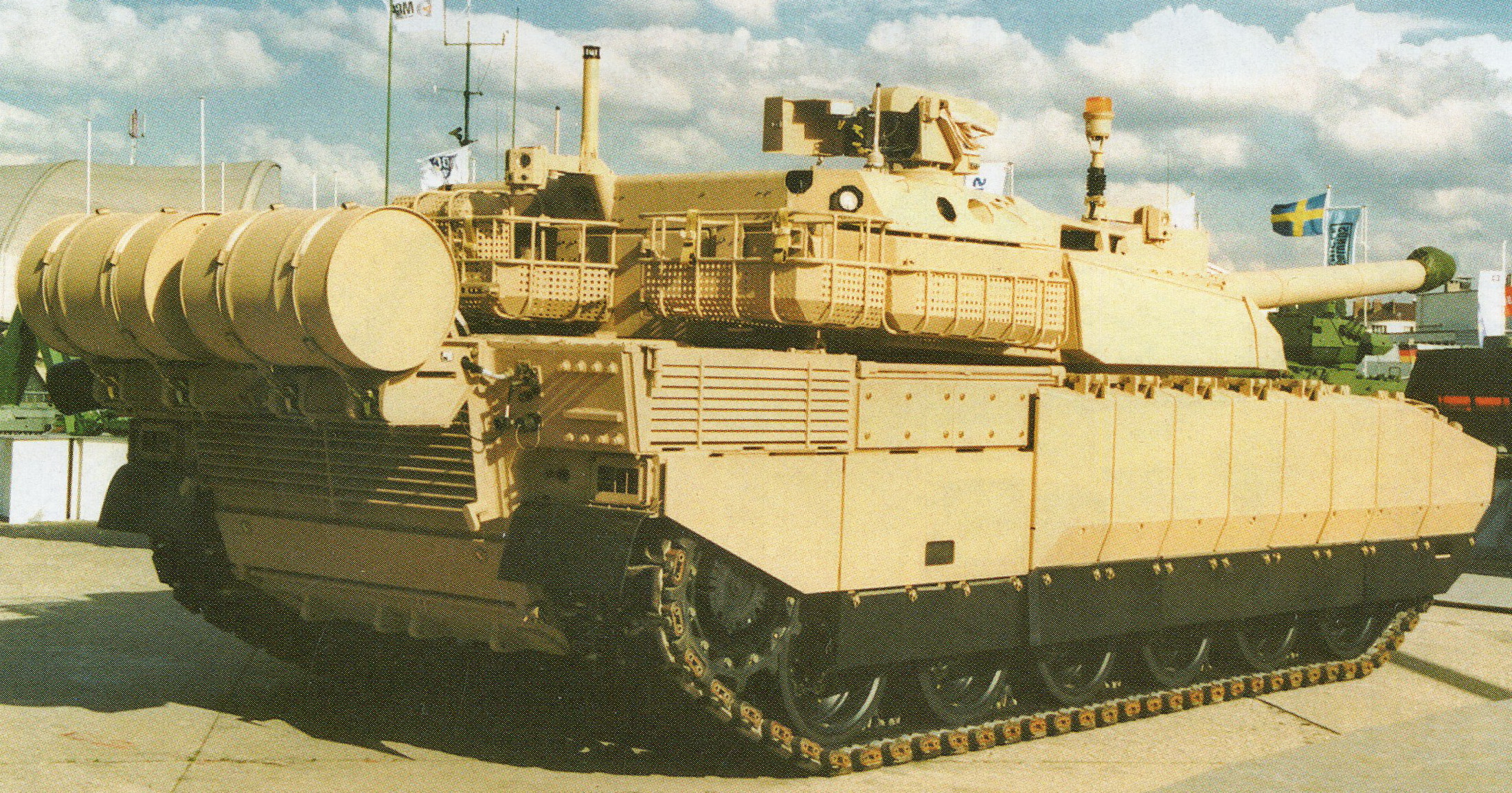
UAE Leclerc (note the different engine part and rear)
This combination is known under the name of EuroPowerPack and is offered as a universal solution for multiple tanks (including the Challenger 2, the Leclerc and the Merkavas). It’s a fairly compact power pack that takes less space than other engines of this output category. Its inclusion, however, meant that the engine compartment of the Leclerc had to be re-designed and these tanks are easily recognized by their different engine decks.
Other changes included:
- New cooling and air-filtration systems along with more powerful air conditioner
- Additional armored skirts
- Additional diesel APU
- Improved HL-80 commander sights with a laser range finder and thermal imager
- Battlefield management system called FINDERS
- Improved stowage baskets
These modified Leclercs took part in the recent Saudi intervention in Yemen in 2015. None of these tanks were allegedly completely destroyed, although several were heavily damaged by mines, RPGs and ATGMs. As tanks go, the Leclercs proved to be very rugged during the fighting and generally outmatched the obsolete Soviet equipment present in this theater of war completely, as expected of this expensive but effective piece of military hardware.
The Emirates paid more than 2.6 billion Euros for the whole arms deal which recently came under scrutiny when a significant piece of evidence was unearthed by the Speigel magazine, hinting at massive bribes for German officials due to the fact that Germany is generally very reluctant to sell military hardware to countries that are known to be at odds with human rights. Either way, the engine export was swiftly approved.
The end of Leclerc mass-production in France did not, however, mean that GIAT stayed idle. Over the course of the last decade, several upgrade programs were devised for it. The upgrade is the Leclerc AZUR.
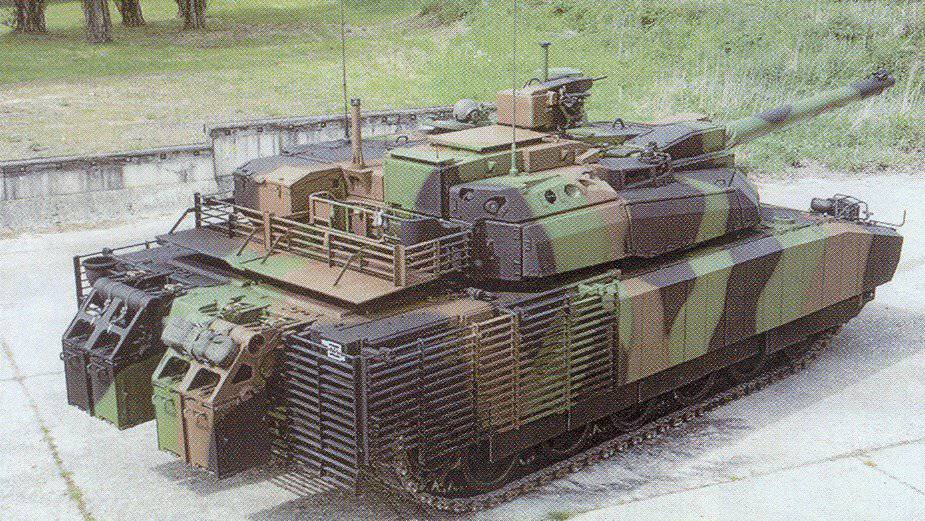
Leclerc AZUR
AZUR stands for “Action en Zone Urbaine” and, as its name suggests, it’s – much like the Challenger Streetfighter for example – a special kit for urban warfare by Nexter. It was first introduced in 2006 and was exported to UAE in 2011 to upgrade some of their Leclercs (which took part in the abovementioned intervention into Yemen). The biggest change is the addition of ERA tiles covering the hull sides and the slat (cage) armor that covers the vulnerable rear of the tank. This system increased the weight of the vehicle to 59 tons.
Its other elements include:
- RCWS (with AANF1 machinegun) on top of the turret
- Elevated panoramic sights allowing for quick view of the entire surroundings of the tank
- IFF system
- Additional protection of engine exhaust and intake against burning liquids
- Additional boxes instead of extra fuel tanks for ammo or spare part transportation
- Communications device for communication with nearby infantry with 200 meter range
- Additional APU outlet
- New GALIX NL or ALR grenade launchers
- Firing alarm for nearby troops
- Protected headlights
Overall, it’s a very potent upgrade for the Leclerc, but it is also quite expensive, which is why it wasn’t really purchased in any large numbers. It’s worth noting that the AZUR was also, early in development, envisaged with an undisclosed hard-kill APS by SAGEM, although this plan did not proceed beyond a small scale mock-up stage. What did proceed, on the other hand, was the introduction of GALIX soft-kill APS, which is an integration of the new GALIX smoke grenade launchers with a laser warning system. If the vehicle is illuminated by an ATGM laser, the launchers will automatically fire smoke in its direction, disrupting the guidance system.
As for the future – the French plan to keep the Leclerc operational at least until 2040. The newest model called Leclerc XLR (sometimes also called Leclerc Rénové) was unveiled in 2016 and is a part of the Scorpion general upgrade program. In French, it stands for “Synergie du COntact Renforcé par la Polyvalence et l'InfovalorisatiON” – but, like with the Mephisto, someone just probably really wanted the program to be called Scorpion.
The existing service Leclercs are all supposed to be upgraded to the XLR standard between 2020 and 2028. The main goal is the integration of the tank to the French C4ISTAR real-time battlefield management system by stuffing it with the best electronics available (including new computer core, digital radios, new color displays etc.).
Other improvements will include:
- ERA kit and slat armor comparable to the AZUR – the key is the improvement to the survivability in urban environments
- IED jammers
- New programmable ammunition
- New 7.62mm RCWS
- GALIX soft-kill APS
And several more items, ensuring that the tank will not become obsolete for the near future.
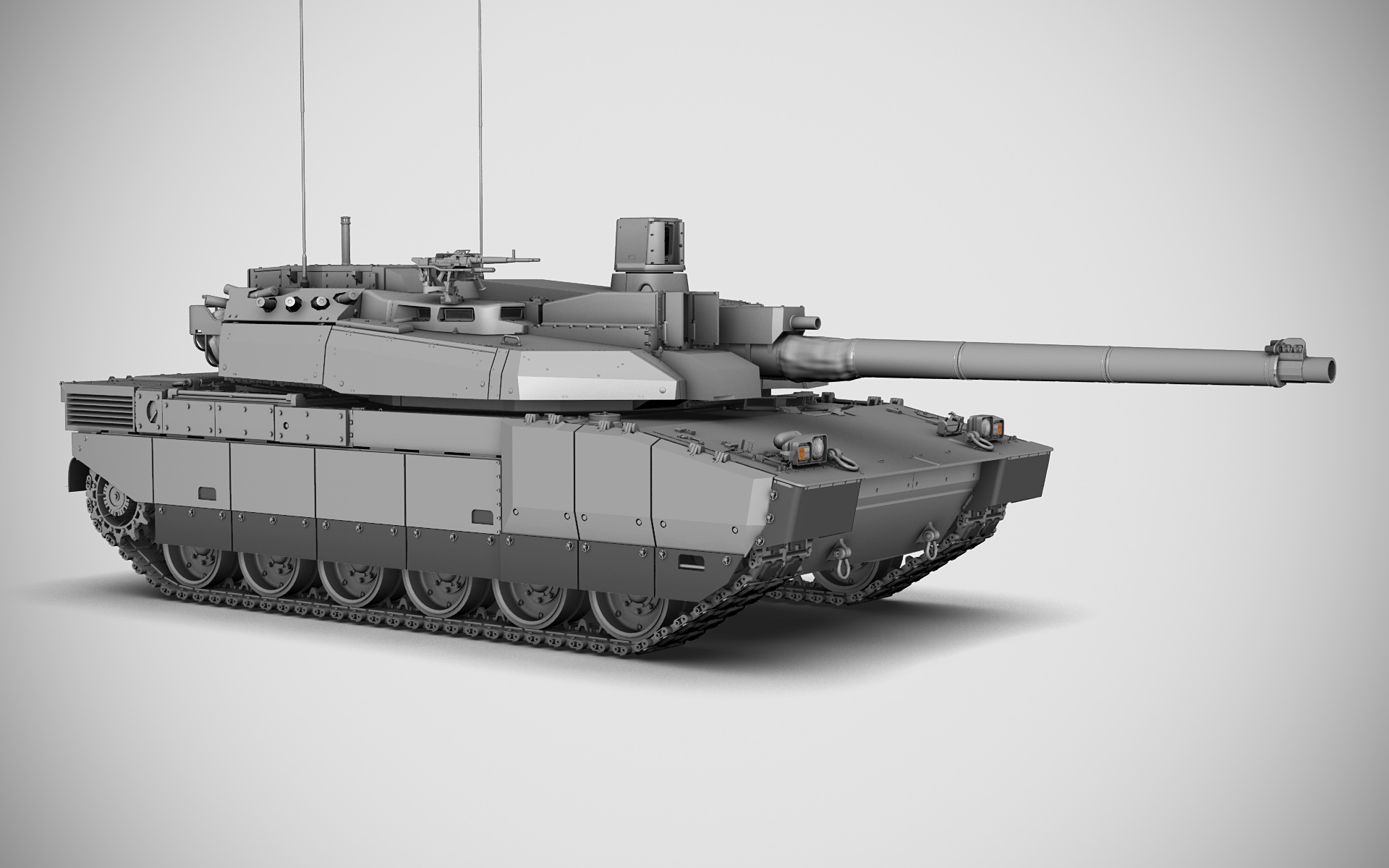
In Armored Warfare, the Char Leclerc will be a Tier 9 progression Main Battle Tank. Much like the Tier 7 Leclerc Prototype, it will be a compact, reasonably well-protected and mobile MBT – a well-rounded machine. The protection will be possible to enhance with an upgrade in the form of the AZUR kit:
- The sides will be protected by ERA
- The rear will be protected by a sturdy set of cage armor
But that’s not all. The vehicle will also feature two separate modules – the GALIX soft-kill APS and the Trophy hard-kill APS. Both modules will be possible to install at once, making the tank one of the few dual APS vehicles in the game. The armor itself, however, will not be very thick around the areas not protected by the AZUR kit, making the vehicle roughly comparable to the Leopard 2A5.
The mobility will be fairly good in its basic form thanks to its 1.500hp engine but it’s the firepower where the vehicle will truly shine thanks to the introduction of special upgraded rounds (Procipac APFSDS and M3M programmable HE) with some rather unique properties as well as generally high penetration values and excellent gun depression.
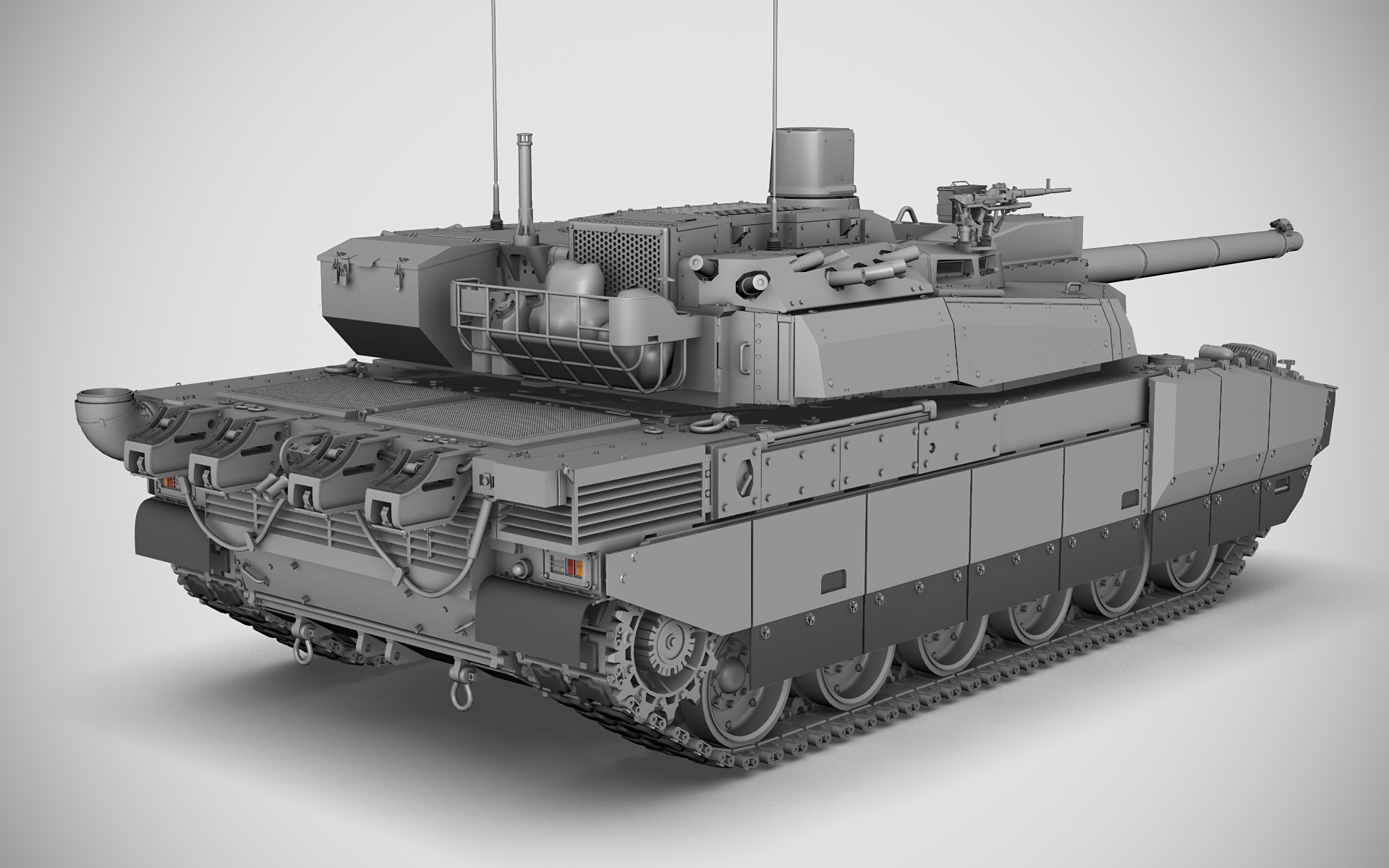
Like the other vehicles of the French branch, the Leclerc will feature a lot of choices. It will be configurable into two rather distinctive roles:
- Urban combat – in this configuration, the tank will excel in mobility and protection, but lack in long-range firepower, making it suitable for close-range combat in city environments
- Sharpshooter – in this configuration, the tank will become a sniper in its class, akin to the Leopard 2 MBT, making it an excellent (if fragile) fire support vehicle at mid-to-long distances
Of course, you will not be limited to these specific roles – you will be free to configure it as you wish to fit the play style you prefer. Apart from the alternative module choices that you are already familiar with from the other vehicles of this branch, you will also be able to choose one of three active abilities:
- Engine Overdrive (increasing the vehicle’s mobility at the cost of stealth)
- Rapid Fire (increasing the vehicle’s short-range rate of fire)
- Sharpshooter (increasing the vehicle’s accuracy and rate of fire at the cost of mobility)
In summary, this tank will be perhaps the most universal MBT in the game and will be capable of fulfilling multiple battlefield roles depending on your wishes.
We hope that you will enjoy it and will see you on the battlefield!








